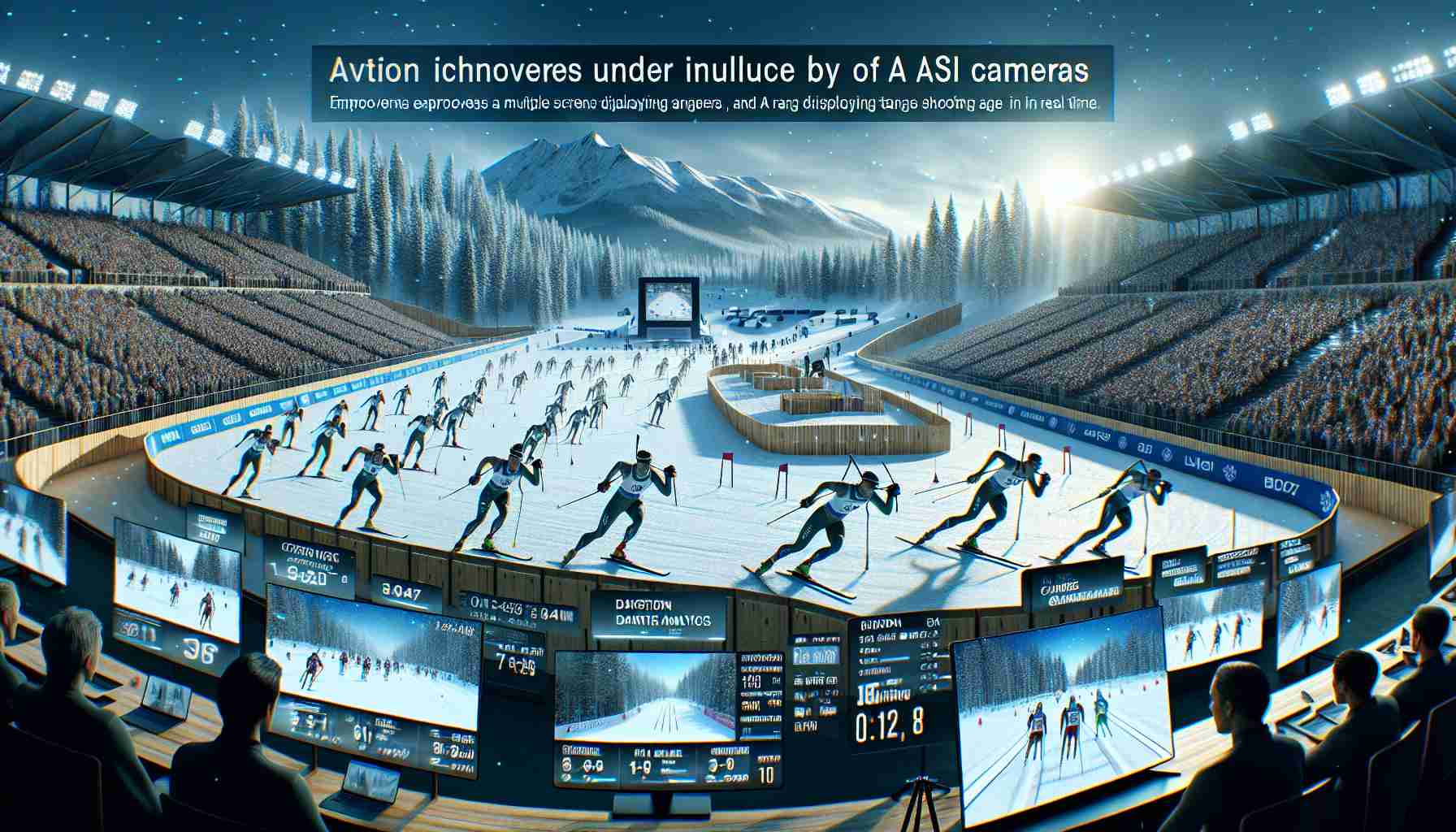- AI cameras now monitor biathlon events, providing unprecedented detail and accuracy.
- Enhanced broadcast experiences offer fans closer, more intimate views of athletes during competition.
- The technological integration aims to broaden biathlon’s appeal, increasing global viewership.
- With broadcasting rights re-negotiations approaching, this innovation is a strategic move for the sport’s future.
- The combination of technology and sport exemplifies a trend towards engaging and immersive spectator experiences.
At the Biathlon World Championships, a technological marvel quietly transformed the picturesque event into a futuristic spectacle. Nestled among snow-draped landscapes, cutting-edge AI cameras now oversee the shooting ranges, capturing every precise moment with unerring accuracy. These smart lenses, infused with artificial intelligence, promise to redefine how spectators experience the sport, offering an unprecedented, intimate view of an athlete’s poise and prowess.
Envision the suspenseful pause before each shot: the athlete’s steady breath crystallizing in the frosty air, a decisive squeeze of the trigger, and then—the exhilarating echo of skill translated into points. Now, viewers can savor these moments with exceptional clarity and detail, all thanks to these innovative cameras. By bringing fans closer to the action than ever before, biathlon hopes to capture the hearts of a wider audience, adding a modern twist to its time-honored traditions.
With broadcasting rights up for negotiation beyond 2030, the introduction of such advanced technology is more than just a novelty; it is a strategic leap towards the future. This technological embrace may well be the key to enhancing spectator engagement, rendering the sport not only more exciting but accessible to a global audience.
At its core, this sleek marriage of innovation with athleticism highlights a pivotal truth: in a rapidly evolving world, the fusion of technology and sport opens up endless possibilities, inviting both old fans and new enthusiasts to witness the beauty of precision anew. Prepare yourself; the way we watch sports is changing, and biathlon is leading the charge.
How AI Cameras are Revolutionizing Sport Viewing Experiences
Technological Transformation in Biathlon
The Biathlon World Championships have quietly stepped into the future with the introduction of artificial intelligence (AI) cameras. These advanced devices offer spectators an unprecedented view of the athletes’ movements and techniques, ushering in a new era of sports viewing.
How AI Cameras Enhance Sport Spectating
1. Precision Tracking: AI cameras are equipped with sophisticated tracking capabilities. They automatically focus on athletes, ensuring no moment is missed. This precision allows for better visual analysis of each shot’s mechanics.
2. Real-Time Analytics: Incorporating AI enables the cameras to provide real-time data analytics, offering insights into athletes’ performance such as shooting accuracy and heart rates. This additional layer of information can greatly enhance the viewing experience, especially for enthusiasts and analysts.
3. Dynamic Replays: The AI technology allows for instant replays from multiple angles, giving viewers the opportunity to explore the sports action from perspectives previously not possible.
Real-World Use Cases
Beyond the Biathlon World Championships, AI cameras can transform other sports. For instance, in football, they could track player positioning and movement dynamics, offering coaches detailed tactical feedback. Similarly, in tennis, they could enhance training by analyzing stroke angles and player movements.
Market Forecasts & Industry Trends
The sports analytics market is burgeoning, with AI playing a pivotal role. According to a report by MarketsandMarkets, the sports analytics market is projected to grow from $2.1 billion in 2021 to $5.2 billion by 2026 (Source: MarketsandMarkets). AI-powered cameras will likely be an essential component of this growth, particularly as leagues strive for enhanced viewer engagement.
Security & Sustainability Aspects
1. Data Privacy: A significant challenge facing the use of AI cameras is ensuring data privacy. The implementation of robust data protection measures is essential to prevent misuse of captured footage.
2. Energy Efficiency: AI technology tends to consume significant power. Innovations are underway to make these systems more energy-efficient and sustainable, aligning with global efforts to reduce carbon footprints in the sporting industry.
Pros & Cons Overview
Pros:
– Enhanced viewing experience with real-time tracking and analytics.
– Increased viewer engagement through dynamic content and detailed insights.
– Opportunity for sports to reach a wider audience with interactive features.
Cons:
– High initial setup and operational costs.
– Privacy concerns regarding data collection and usage.
– Potential technological glitches impacting live broadcasts.
Actionable Recommendations
For sports organizations considering AI camera technology, it is crucial to:
– Invest in comprehensive data protection strategies.
– Partner with technology providers focused on sustainability.
– Educate stakeholders on the benefits and limitations of AI integration.
Conclusion
AI cameras represent a significant leap forward in the way sports are experienced and analyzed. As this technology evolves, it will become increasingly important for sports organizations to leverage its potential while addressing challenges related to privacy and cost.
For more information on AI in sports, you can visit IBM or FIFA.
Prepare to witness a transformation in sports viewing where precision and innovation go hand in hand, promising a future where every moment is captured with exceptional clarity.
